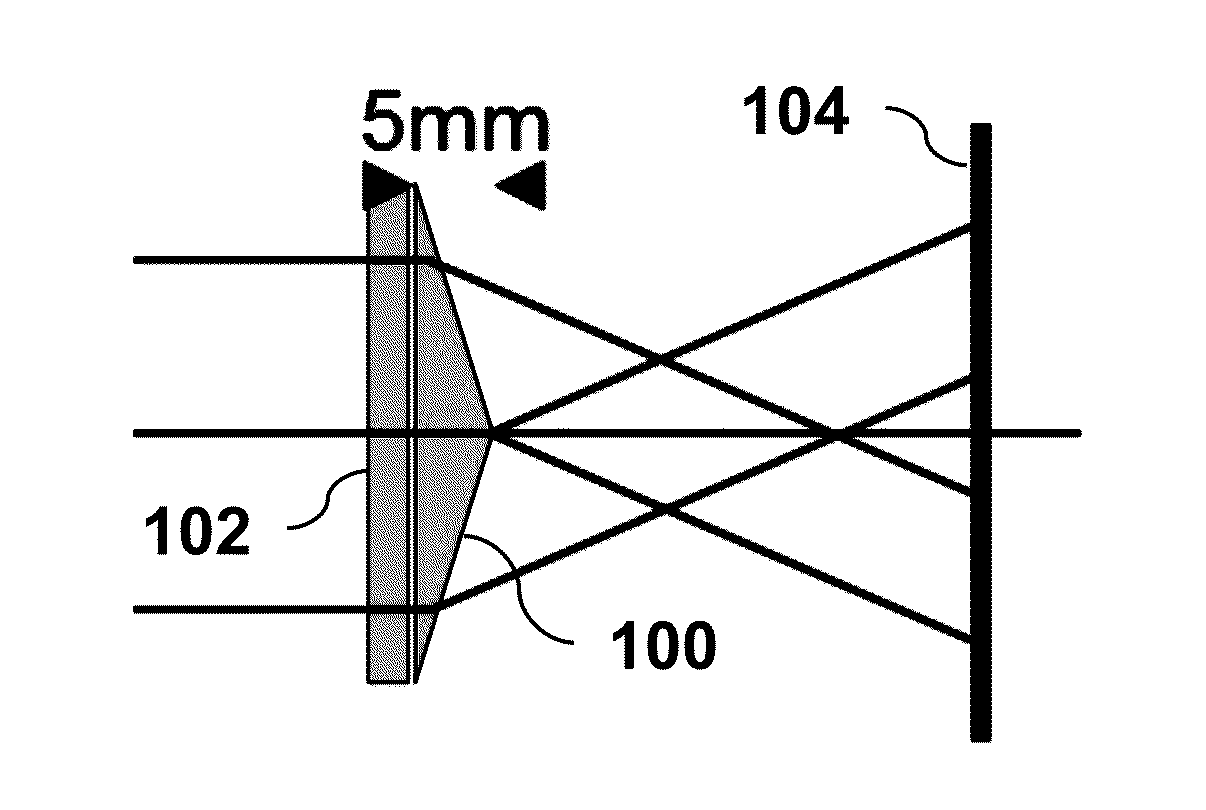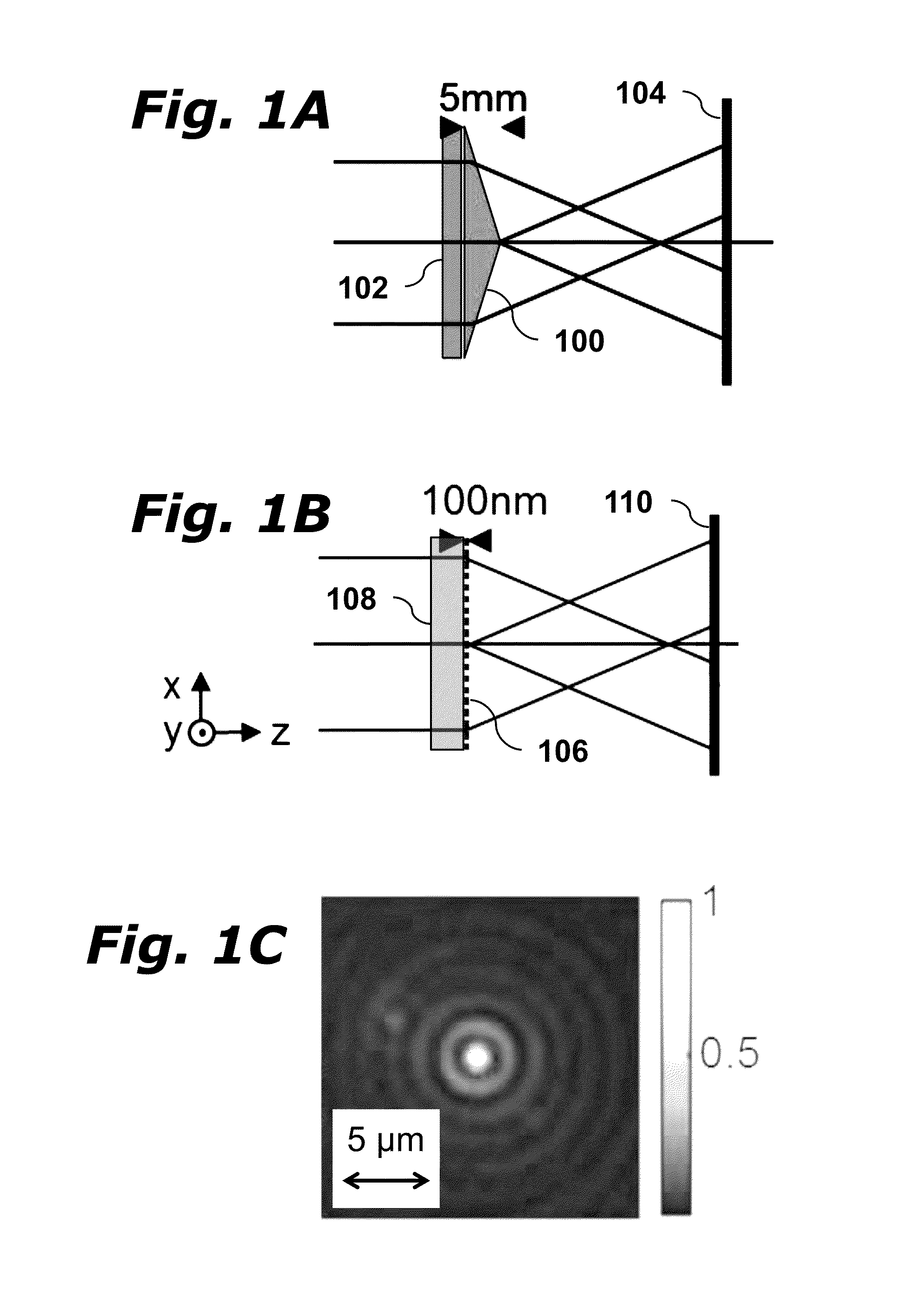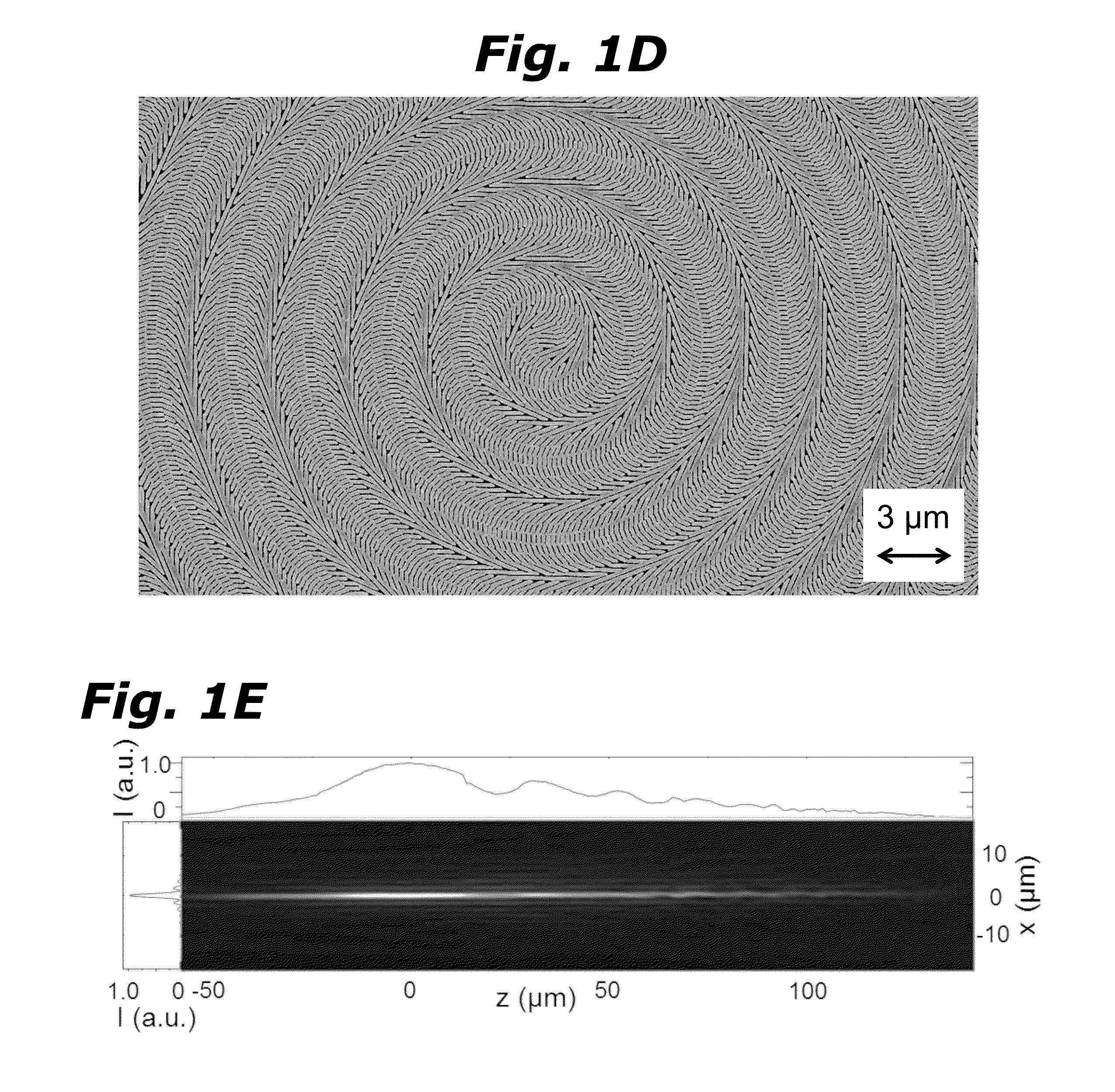Dielectric Metasurface Optical Elements
- Summary
- Abstract
- Description
- Claims
- Application Information
AI Technical Summary
Benefits of technology
Problems solved by technology
Method used
Image
Examples
Embodiment Construction
[0044]Embodiments of the present invention provide devices employing gradient metasurfaces, which are essentially 2-dimensional optical elements capable of manipulating light by imparting local, space-variant phase-changes on an incident electromagnetic wave. These surfaces have previously been constructed from nanometallic optical antennas and high diffraction efficiencies have been limited to operation in reflection mode. The present invention provides a realization of dielectric gradient metasurface optical elements (DGMOEs) capable of achieving high efficiencies in transmission mode at visible wavelengths. Embodiments include ultrathin gratings, lenses, and axicons that may be realized by judiciously patterning a 100-nm-thin Si layer into a dense arrangement of Si nanobeam-antennas. By fabricating these gradient metasurfaces with silicon and other semiconductor materials, they can be integrated with electronic, electrooptic, and electromechanical devices using mature semiconduct...
PUM
 Login to View More
Login to View More Abstract
Description
Claims
Application Information
 Login to View More
Login to View More - R&D
- Intellectual Property
- Life Sciences
- Materials
- Tech Scout
- Unparalleled Data Quality
- Higher Quality Content
- 60% Fewer Hallucinations
Browse by: Latest US Patents, China's latest patents, Technical Efficacy Thesaurus, Application Domain, Technology Topic, Popular Technical Reports.
© 2025 PatSnap. All rights reserved.Legal|Privacy policy|Modern Slavery Act Transparency Statement|Sitemap|About US| Contact US: help@patsnap.com



